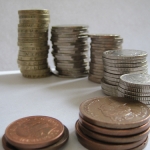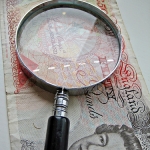 Does it sound familiar that no matter how much income you earn in a month it all seems to be gone by the end. You promise yourself that when you get a pay rise, or when you land that big contract, then you will start saving. But actually, you do get a pay rise, you do land that big contract, and you still have no money left at the end of the month.
Does it sound familiar that no matter how much income you earn in a month it all seems to be gone by the end. You promise yourself that when you get a pay rise, or when you land that big contract, then you will start saving. But actually, you do get a pay rise, you do land that big contract, and you still have no money left at the end of the month.
It’s one of the great unexplained phenomena. You have a cracking month, infact your best for a few years……..but you still don’t have any funds in your bank account at the end of the month.
The technical term is “expenditure creep”. For the non technical amongst us it just means that you spend however much income you have coming in! Income goes up and expenditure goes up with it, without you even necessarily being aware.
Keep a note of your spending
If you want to start some form of savings plan but don’t think you can afford it, have a look at what you’re spending. Chances are there is surplus there that can be cut without it having too great an impact on your lifestyle.
The majority of us actually have no idea where our money goes. So before you can start to make any savings you need to have a full idea of exactly what it is you spend your hard earned cash on.
For a minimum of the next 3 months keep a detailed record of everything you spend. And I do mean everything! Include spending by direct debits, standing orders, cheques, credit cards and cash. If you pay for a lot of things by cash you need to carry a notebook around with you and note down what you spend as and when you spend it. Don’t wait until the end of the day to note it all down because chances are you will have forgotten some of it.
At the end of each day or end of each week transfer everything from the notebook and all other receipts onto a spreadsheet itemised for the various different categories of expenses. This will allow you to see exactly what it is you are spending your cash on.
Until you’ve worked out what you’re spending your money on, you can’t control it. Keeping a detailed record of what you spend is the first step to getting your spending under control.
Why 3 months?
I recommend you do this over a three month period to aim to see what an average months spending looks like. In addition, a number of expenditure items (e.g. utilities) may only occur on a quarterly basis.
Often, having done the spreadsheet it’s enough to immediately see where you can save money. You may, for example, spend a lot of money on coffee and muffins if you’re early for a meeting and pop into the coffee shop to kill time. If you do this on a regular basis you’d be surprised how much it can build up.
You might be spending a lot of money on takeaways and eating out. If so, that’s an obvious place to start to make savings. You don’t need to totally stop eating out. But if you regularly eat out twice a week, can you consider cutting that down to once a week? Or if you eat out at a reasonably pricey, wine bar, can you consider going to a cheaper bistro type place?
Where can you make savings?
You need to review the results and then consider where you can make savings. Challenge every item on the list and ask yourself do you really need it? If you do, then consider is there a way you can get it cheaper?
Your aim is to widen the gap between income and expenditure. You may want to set yourself a target to have improved your monthly cashflow by a certain amount over say, the next 6 months.
You’d be surprised how taking just these simple steps can help you “find” enough money to start a regular savings plan.
Sign up for my eBook download to help you sort your finances and improve your wealth.






